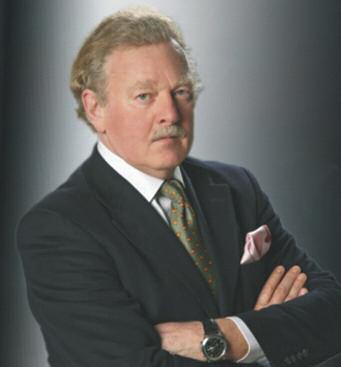A long and bumpy ride towards recovery
14 October 2011As delegates assembled for the open part of the annual general meeting (AGM) of the European Panel Federation (EPF) at the Sheraton Hotel, Kraków on July 1, they heard of the progress made towards setting a new formaldehyde emission standard for the European panel industry.
At the 2008 AGM, held in Vienna, Austria, the EPF adopted a voluntary standard, EPF-S, but it was never really put into practice, partly due to conflicts with the North American CARB (California Air Resources Board) standard.
The new proposal, in response to the attempts by a number of European countries to further reduce emissions, set a new limit of 0.065ppm, as measured by the chamber test method described in EN717-1.
Details will be negotiated within the EPF Technical Working Group and it is intended that the new rules should be incorporated into European standards.
However, the new limit will initially be applied only to CE-labelled uncoated panels for use in construction.
It is expected that the EPF value for formaldehyde emissions will form part of the forthcoming CEN/TC112 standard expected to come in within the next two years.
The decision on the 0.065ppm limit was not unanimous and some member countries objected to the universal application of this value to all particleboard, MDF/HDF and OSB panels. This resulted in the compromise proposal covering only construction panels.
However, it would not seem practicable to have different rules for panels used in interior/furniture applications and those used in construction.
As always, a major and much-anticipated event at the open part of the General Assembly was the presentation of the EPF’s latest annual report.
President of the Federation, Ladislaus Döry, gave some of the highlights from this year’s edition. He reported that better times are slowly coming.
“The economic indicators are improving since the second quarter of 2009, despite turbulence during the first few months of 2010.
“Most of these indicators are now beyond their long-term average, although account has to be taken of the fact that the real consumption levels are still far below precrisis levels, in particular for furniture and construction materials.”
Mr Döry pointed out that there are substantial differences between member states (of the EU and Euro Zone).
“My personal impression is that business and consumer confidence are very strong in Germany and that this country also enjoys big demand for exports, which is an important driver for Europe as a whole, but that the situation becomes much less positive the further you move to the peripheries of Europe.
“Furthermore, the situation for the wood based panel producers is complicated by the fact that the ultimate end-user of our products is uncertain and in many countries he/she is worried about the future which makes him/her postpone plans for new construction or renovation as well as for buying new furniture.
“On the other hand, our companies are confronted with massive cost increases for essential raw materials (in particular for wood and resins) as well as for energy and transport.
“Consequently, European panel producers are squeezed between their suppliers and the difficult market situation of their customers. Furthermore, recent events such as the political events in North African andMiddle Eastern countries, and the terrible catastrophe in Japan, will also have impacts on the global economy and on the market prospects for our industry.”
Mr Döry continued, echoing the strong theme of last year’s AGM in Dresden: “Moreover, the discussion about the hazards of nuclear energy risks even more ambitious plans for renewable energy, resulting in even more pressure on wood raw material costs”.
He concluded this section of his presentation with the words: “Consequently the overall positive messages about the general economic situation should be interpreted carefully in relation to the wood based panels sector. We are surely on the road to recovery, but it risks being a long and bumpy ride….”
Particleboard production in Europe increased 3.5% in 2010, though from a very low level, to slightly over 30 million m3, says the annual report, pointing out that this is still well below the 2007 peak of 37.8 million m3, while some countries saw a further decline in their particleboard production.
MDF production rose 2.8%, to 11.5 million m3, excluding Turkish and Russian production, while OSB grew 1.4%, to 3.6 million m3.
Turning to consumption data, the EPF reports that particleboard apparent consumption and real consumption rose by 4.4 and 3.8% respectively. “Stocks had thus slightly increased between the beginning and end of 2010,it said.
For MDF, consumption recovered moderately, rising by 4.6%. If extra-EU sales are taken into account, the figure was 5.2%, with total demand for European MDF reaching 11.5 million m3 in 2010.
For OSB, European demand picked up further although at a moderate pace as the building activity was still subdued, says the annual report. Most of this trade was with the EU and EFTA countries, with exports from the EPF member countries to the Far East increasing by 32% last year.
